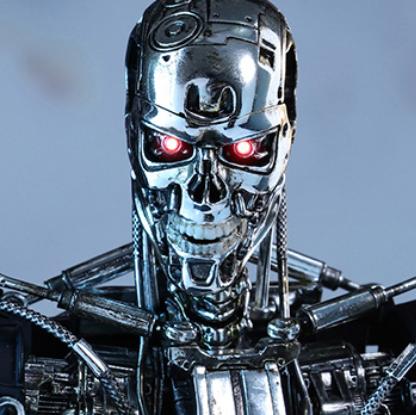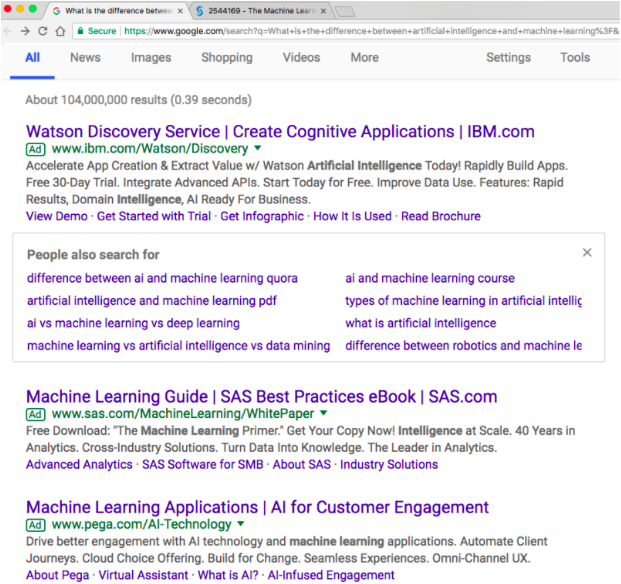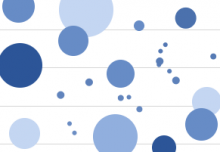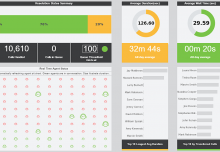A set of buzzwords we are starting to hear every day is Artificial Intelligence (AI) and Machine Learning (ML). In addition to the vast business potential of these technologies, the more popular take for most people is perpetrated by the entertainment industry, which has us all thinking of what could happen if AI or ML equipped devices became self-aware. This is by no means a new fear. In 1927, Fritz Lang’s film Metropolis effectively expressed the fear that the society of his time had for thinking machines. More disturbing portrayals showed in both 1984’s The Terminator and
 Terminator Endoskeleton figure, courtesy of Sideshow Toys
Terminator Endoskeleton figure, courtesy of Sideshow Toys
1999’s The Matrix giving a chilling picture of what might happen if these autonomous digital minds were able to take over completely.
Much of this fear is grounded in the definitions of the two tools: AI refers to when non-human systems utilize cognitive functions such as learning and problem solving. While Machine Learning has powerful computers sorting through massive amounts of data and extrapolating probabilities from there. The implications of this technology has wide-reaching promises for business and daily life, but the chance of us bowing to computer overlords is more remote than Hollywood would like to make it seem.
An understanding of what might be possible with this increasingly visible technology is not limited to the entertainment industry. As calmer and wiser minds often do, there are some groups watching this rush to implement this new technology and wondering if it should be allowed to continue. In 2017, both Stephen Hawking and Elon Musk expressed their concerns about the dangers of A.I.
Hawking is concerned that artificial intelligence could replace humans. The world-renowned physicist fears that somebody will create AI that will keep improving itself until it’s eventually superior to people… <While>Musk… said he should be “on the list of people who should absolutely *not* be allowed to
develop digital superintelligence”
Presuming that our scientists and technicians can improve the technology without flipping some fatal switch, what do AI and Machine Learning actually mean to today’s businesses? Gone are the days when we just wanted to make devices, computers, software, and websites faster and faster, now we are looking to give them the ability to make decisions. This is the crux of what both Artificial Intelligence and Machine Learning are trying to make possible.
Artificial Intelligence
In 1955 the computer scientist John McCarthy coined the term artificial intelligence, or AI. His pioneering work was in AI – which he defined as “the science… of making intelligent machines.”
A full definition for A.I. is:
Artificial intelligence or AI… is intelligence demonstrated by machines, in contrast to the natural intelligence (NI) displayed by humans and other animals. In computer science AI research is defined as the study of “intelligent agents”: any device that perceives its environment and takes actions that maximize its chance of successfully achieving its goals. Colloquially, the term “artificial intelligence” is applied when a machine mimics “cognitive” functions that humans associate with other human minds, such as “learning” and “problem solving”.
Arend Hintze, a current day A.I researcher, creates creatures of artificial intelligence in digital environments and has them solve navigation problems. With each of iteration of the creatures he has taken the best performing and evolved it into its own replacement. Might he become “the destroyer of worlds,” as Oppenheimer lamented after spearheading his own project? He said it was possible, but he probably has 50 to 250 years before that could come to pass.
Matroid is one company working on Artificial Intelligence for identifying data within longer media. Their CEO Reza Zadeh gave a talk on the potential of AI, which is really to pass tedious and repetitive tasks to computers instead of wasting valuable and expensive human time.
…we focus on the long tail of objects that might be interesting to a human in media. So if you have a eight hour video and — and you’re interested in finding particular events that happen in this video without having to watch the whole thing, you come to Matroid and you build a detector for it, and then you look for those things that you’re interested in, in a few minutes as opposed to eight hours.
Whether or not you think about Artificial Intelligence, it is now a facet of everyday life. Companies you know of and utilize every day are getting into the AI game. DAtamation found Apple and Amazon are using this technology and are interested enough to make related acquisitions.
Amazon The online retail giant offers both consumer and business-oriented AI products and services. Amazon Echo brings artificial intelligence into the home through the intelligent voice server, Alexa. For AWS, the company has three primary services: Lex, a business version of Alexa, Polly, which turns text to speech, and Rekognition, an image recognition service.
Apple has acquired four artificial intelligence startups within the past two years, demonstrating its big step into the artificial intelligence sphere. One of them became the bases for FaceID, a facial recognition security system. The bulk of the company’s work is around Siri, Apple’s virtual assistant, but as usual Apple is tight-lipped about plans. It recently poached Google’s AI chief, which will undoubtedly help its efforts and further the acrimony with Google.
Google has long been working to figure out what you want and offer it to you before you ask. To do this, the have been adding more power to the A.I. behind their searches and their results will likely continue to improve.
Machine Learning
The phrase “machine learning” was coined in 1959 by Arthur Samuel. It evolved from the study of artificial intelligence and “comes from the study of pattern recognition and computational learning theory in artificial intelligence. Machine learning uses algorithms that can learn from and make predictions on data – such algorithms make data-driven predictions or decisions.” Reza Zadeh said that “…we build these algorithms that have lots and lots of numbers that we don’t know how to set, and then we set those numbers by looking at data. That’s the general machine learning task.”
One company working in this area is Zendesk, a customer contact management system. Over their 10 years of activity, they have amassed records of over 2 billion customer interactions in order to improve how customer service is delivered:
Machine learning customer service
Simplifying machine learning to automate and improve customer service. Machine Learning is really pattern matching. The human brain is brilliant at pattern matching, but we cannot look at 2 billion tickets. The amount of data collected is just too overwhelming; we need machines and algorithms to help. Building customer relationships works better when it’s driven by data. With Zendesk Explore, you get instant access to the customer analytics that matter—and the deeper understanding of your customers and business that comes with it.
They put this information in a predictive manner to “escalate experiences identified as potentially negative. Now we use the prediction score to accurately and automatically identify these types of tickets”
Making predictions based on data is what any analyst tries to do. In the Zendesk example, they assist that analyst by automating the notification. Machine Learning is really just one way to help us do our jobs more easily.
AI and ML in business technology
As you can see there is a lot going on with Big Data Machine Learning and Artificial Intelligence and potentially lots of money invested in improving the technology. A quick Google search reinforces this by showing that the big boys in the computing and data industries have come to play in the game of making computers smarter.
Google search performed by the author 7 June 2018
In addition to Apple, Google, IBM, and Amazon, other big name players are also getting involved, such as Facebook, Microsoft, and Intel, which sort of round out the set. The important takeaways are that beyond being fodder for some great science fiction, both Artificial Intelligence and Machine Learning are now a part of our lives. You’ll find AI in your CRM, your project management software, any ERP or field service management tool worth its salt, and you may not even know you’re using it. As automations using AI get smarter and smarter, the technology continues to become more seamless and we get more used to using it.
Machine Learning may be used on you when next you have to call tech support – especially if you might crop up as one of their “potential negative experience” contacts. While A.I. will be used when you next search for something on the internet. Having moved beyond spiders, Google now has Deep Mind and massive stores of data with which they try to figure out searching, researching, and buying patterns that drive the economy.
And while AI and ML can seem scary when presented in Hollywood’s true worst-case-scenario style, the real worst case here is if businesses don’t begin to adopt the technology where they can, in within software that’s already available to them. Just as the move to cloud and mobile left companies in the dust only 5 years ago, AI and ML promise to give businesses the edge that could determine their success in the coming years.
Steve Medeiros is a writer for TechnologyAdvice.com. He has an extensive background in technology, software, and customer support. Find him on LinkedIn.
PS – In something of an ironic twist, while writing this article my daughter and I encountered a robot mower which seemed to think that she needed mowing.










